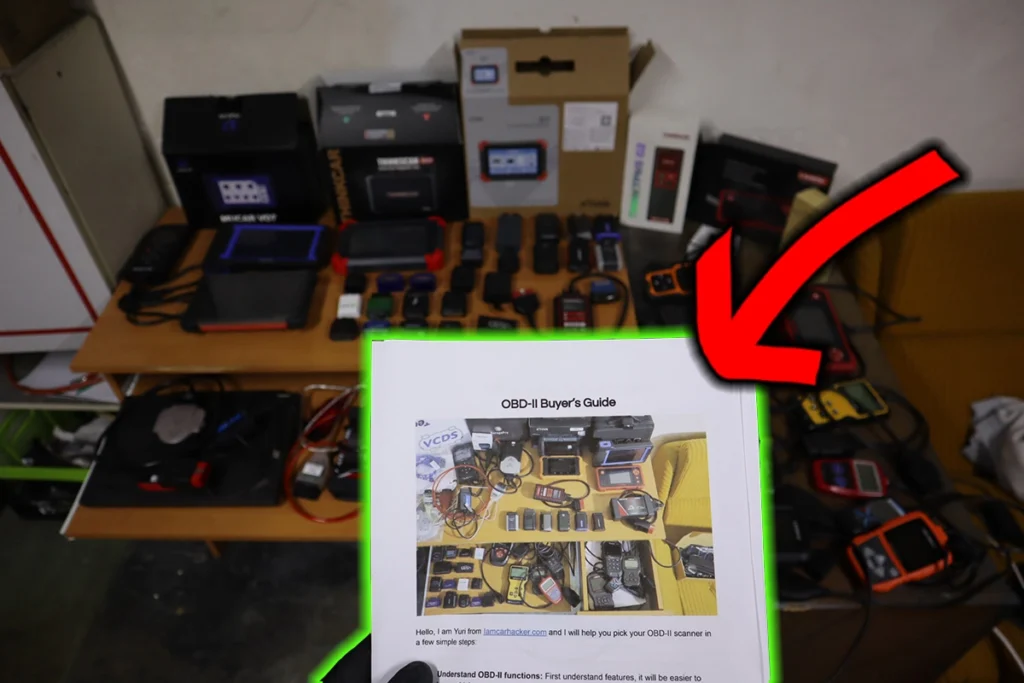Okay, here is a technical guide to diagnosing automotive no-start conditions, structured with tables and lists for easy following, starting with the fundamental requirements for an engine to run.
An internal combustion engine requires three primary elements to start and run:
- Air: A sufficient supply of clean air for combustion.
- Fuel: The correct mixture of fuel delivered at the proper pressure.
- Spark (Ignition): A properly timed spark to ignite the air-fuel mixture.
Your diagnostic path depends fundamentally on what happens when you try to start the engine: Does it Crank, or does it NOT Crank (or cranks very slowly)?
Phase 1: Initial Assessment
Attempt to start the vehicle and carefully observe the behavior and sounds.
| Observation / Sound | Interpretation | Go To: |
|---|---|---|
| Engine Cranks Normally | The starting electrical system is likely functional. Problem is Air, Fuel, or Spark. | Phase 3: Cranks But No Start |
| Engine Does NOT Crank | The engine does not turn over at all. Problem is in the starting electrical circuit. | Phase 2: Engine Does Not Crank |
| Engine Cranks Slowly / Weakly | The starter motor is turning the engine but sluggishly. Likely an electrical issue. | Phase 2: Engine Does Not Crank |
| Fast Clicking Sound | Starter solenoid rapidly engaging/disengaging. Battery likely low on charge. | Phase 2: Engine Does Not Crank |
| Single Loud Click, Then Nothing | Solenoid attempts to engage, but motor doesn’t spin or gets no power. | Phase 2: Engine Does Not Crank |
| No Sound At All (Key in START) | No engagement from the starter system. Problem likely upstream of the starter. | Phase 2: Engine Does Not Crank |
Phase 2: Engine Does NOT Crank or Cranks Slowly
Focus on the starting electrical circuit. You will need a multimeter and potentially a test light.
Step 1: Battery Health Check
The battery is the heart of the starting system.
| Action | Tool | Measurement / Observation | Interpretation & Next Step |
|---|---|---|---|
| Measure voltage (Ignition OFF) | Multimeter | Measure across terminals. | ~12.6V: Fully charged. Proceed to 1.2. <br>Below 12.4V: Discharged. Charge/test battery. |
| Measure voltage (During Crank – if possible) | Multimeter | Measure across terminals. | 10V or higher: Healthy under load. Proceed to Step 2. <br>Below 10V: Weak/Failing battery. Test/replace battery. |
| Visual Inspection | N/A | Check terminals and cable ends. | Corroded/Loose: Clean terminals & connections. Ensure tight. Re-test starting. If no change, proceed to 1.1 (if not done) or Step 2. |
Step 2: Inspect Main Cables and Connections
Ensuring power can flow freely from the battery to the starter and back through ground.
| Connection Point | Visual Check | Technical Check (Voltage Drop Test) | Interpretation & Next Step |
|---|---|---|---|
| Positive Cable (Battery to Starter) | For corrosion, looseness at both ends. | Connect multimeter + to positive battery post, – to starter battery terminal. Crank engine. | < 0.5V Drop: Connection/cable good. Proceed to Ground Check (Step 2.2). <br>**> 0.5V Drop:** High resistance in positive cable or connections. Clean/tighten/replace cable. |
| Negative Cable (Battery to Engine/Chassis Ground) | For corrosion, looseness at battery, engine block, chassis ground points. | Connect multimeter – to negative battery post, + to engine block (clean metal). Crank engine. | < 0.2V Drop: Ground good. Proceed to Step 3. <br>**> 0.2V Drop:** High resistance in ground cable or connections. Clean/tighten/replace cable. |
Step 3: Test the Starter Control Circuit
Verify the starter solenoid is receiving the signal to engage from the ignition system.
| Action | Tool | Measurement / Observation | Interpretation & Next Step |
|---|---|---|---|
| Test voltage at Starter Solenoid Signal Terminal (Key in START) | Multimeter or Test Light | Connect meter – to ground, + to small solenoid terminal. | ~12V Present: Control circuit okay. Proceed to Step 4. <br>No/Low Voltage: Problem upstream in control circuit. Proceed to Step 5. |
Step 4: Diagnose Starter Motor/Solenoid (If Signal is Present)
If the solenoid is receiving the signal and main power/ground are verified (Steps 1-3), the issue is likely the starter unit.
| Symptom (with signal present) | Potential Cause(s) | Action / Test | Outcome & Next Step |
|---|---|---|---|
| Single Loud Click, No Crank | Faulty Solenoid (main contacts) | N/A (Indicates internal solenoid issue) | Replace Starter Assembly. |
| No Sound After Signal Check Passes | Faulty Starter Motor or Solenoid | N/A (Indicates internal failure) | Replace Starter Assembly. |
| Slow/Weak Crank (after Bat/Cable checks) | Failing Starter Motor | N/A (Worn brushes, windings, etc.) | Replace Starter Assembly. |
| Grinding Noise | Starter drive gear/flywheel ring gear damage | Visual inspection of flywheel ring gear (difficult access). Check starter drive gear upon removal. | Replace Starter Assembly. Inspect/repair flywheel if necessary. |
| Starter Spins Freely, Engine Doesn’t Crank | Faulty Starter Bendix (Overrunning clutch) | N/A (Indicates internal bendix failure) | Replace Starter Assembly. |
Step 5: Diagnose Upstream Control Circuit (If No Solenoid Signal)
Work backward from the starter solenoid signal wire to find where the voltage is being lost. Consult a wiring diagram for your specific vehicle.
| Component | Typical Location | Action / Test | Outcome & Next Step |
|---|---|---|---|
| Fuses & Relays | Fuse boxes (engine bay, dashboard) | Check starter fuse for continuity. Test starter relay (swap or bench test). | Blown Fuse: Replace fuse. Investigate cause if it blows again. <br>Faulty Relay: Replace relay. |
| Safety Interlock Switches | On transmission (Neutral Safety Switch) or clutch pedal (Clutch Switch) | Check for continuity through switch in correct starting position (P/N or clutch depressed) while checking for voltage after the switch with key in START. | No Continuity/Voltage Drop: Switch faulty or out of adjustment. Repair/replace/adjust switch. Proceed to next upstream component if voltage is present at switch input. |
| Ignition Switch | On steering column or dashboard | Check for voltage leaving the ‘START’ terminal of the switch when the key is held in the START position. (Requires access to switch wiring). | No Voltage Output in START: Ignition switch faulty. Replace switch. <br>Voltage Output Present: Wiring issue between switch and next component (relay or safety switch). Trace wiring. |
| Wiring Harness | Between components | Visually inspect for damage, corrosion, loose connectors along the signal wire path. | Damage Found: Repair wiring. |
Phase 3: Engine CRANKS Normally But Does Not Start
The starting electrical system is working. The problem lies with Air, Fuel, or Spark.
Step 1: Fuel System Check
Verify the engine is receiving fuel at the correct pressure and quantity.
| Action / Test | Tool (If needed) | Observation / Measurement | Interpretation & Next Step |
|---|---|---|---|
| Fuel Level Check | N/A | Check fuel gauge. Add fuel if low. | Tank Empty/Very Low: Add fuel. Re-test starting. |
| Fuel Pump Prime Listen | N/A | Turn key to ON (not START), listen for a whirring sound from fuel tank area. | Sound Heard: Pump is likely priming. Proceed to 1.3 if possible. <br>No Sound: Fuel pump or its circuit (fuse, relay) is likely faulty. Diagnose fuel pump circuit/replace pump. |
| Fuel Pressure Test | Fuel Pressure Gauge | Connect gauge to fuel rail test port. Observe pressure while cranking. | Pressure within Spec: Fuel delivery likely okay. Proceed to Step 2. <br>Low/No Pressure: Issue with fuel pump, pressure regulator, filter, or line. Diagnose fuel system. |
| Injector Pulse Check | Noid Light or Multimeter (advanced) | Test for signal at fuel injector connector while cranking. | Pulse Present: ECU is trying to fire injectors. Fuel delivery is likely okay to the injectors. Proceed to Step 2. <br>No Pulse: Issue with ECU, crankshaft/camshaft sensors, or wiring. Requires advanced diagnosis. |
Step 2: Ignition System Check (Spark)
Verify the spark plugs are firing at the correct time and with sufficient intensity.
| Action / Test | Tool | Observation / Measurement | Interpretation & Next Step |
|---|---|---|---|
| Check for Spark Presence | Spark Tester (Recommended) or temporarily use a grounded spark plug (with caution). | Connect tester/plug, ground it, crank engine. Observe for spark. | Strong Blue Spark: Spark is present. Proceed to Step 3. <br>Weak/Yellow Spark or No Spark: Issue in ignition system. Diagnose based on system type (coil-on-plug, distributor, etc.). |
| Inspect Spark Plugs | Spark Plug Socket | Remove and visually inspect spark plugs. | Fouled/Damaged: Replace spark plugs. <br>Wet (with fuel): Engine flooded, indicates previous lack of spark or too much fuel. <br>Dry: Indicates no fuel is reaching the cylinders. Revisit Fuel System (Step 1). |
| Ignition Coil/Wire Check | Multimeter (advanced) | Test resistance and/or voltage signals at coils/wires (vehicle specific). | Faulty Component: Replace coil, wire, or distributor cap/rotor as needed. |
| Crankshaft Position Sensor (CKP) | Scan Tool (Preferred) or Multimeter (checking signal) | Check for RPM signal on scan tool while cranking. Test sensor output signal (vehicle specific). | No RPM Signal / Faulty Signal: CKP sensor or wiring is faulty. Replace sensor/repair wiring. This sensor is crucial for both spark and fuel injector timing. |
Step 3: Air and Compression Check
Verify sufficient airflow and that the engine has proper mechanical integrity (compression).
| Action / Test | Tool | Observation / Measurement | Interpretation & Next Step |
|---|---|---|---|
| Air Filter Check | N/A | Visually inspect the air filter. | Severely Clogged: Replace air filter. Re-test starting. |
| Intake Airway Obstruction | Visual Inspection | Check for obvious blockages in the intake ducting. | Blockage Found: Remove obstruction. Re-test starting. |
| Compression Test | Compression Gauge | Perform a cylinder compression test (engine warm, WOT while cranking). | Compression within Spec (check service manual): Engine mechanicals likely okay. Revisit Fuel/Spark. <br>Low/No Compression: Indicates internal engine mechanical issue (valves, rings, head gasket, timing belt/chain). Requires significant repair. |
| Engine Timing Check | Timing Light / Visual Inspection (Timing Belt/Chain) | Check ignition timing or physically inspect timing belt/chain for breakage/slipping. | Timing Incorrect / Belt/Chain Broken/Slipped: Engine timing is off, preventing proper combustion. Repair/replace timing components. |
By systematically following the relevant phase and steps based on whether the engine cranks or not, you can effectively narrow down the potential causes of a no-start condition using basic tools and technical knowledge. Always consult a vehicle-specific service manual for detailed specifications, component locations, and advanced testing procedures.

Hi, I am Juraj “Yuri” Lukacko. I got frustrated by unhelpful and scammy mechanics, so I decided to learn everything about car diagnostics myself. I test dozens of new car diagnostic tools every month along with learning new strategies to fix and customize cars. About Juraj Lukacko (Yuri)

